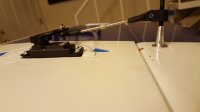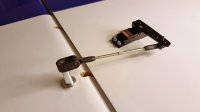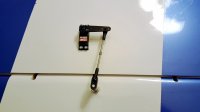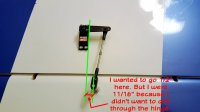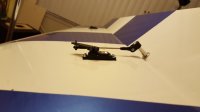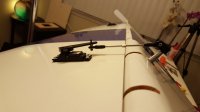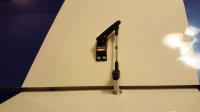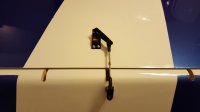You are using an out of date browser. It may not display this or other websites correctly.
You should upgrade or use an alternative browser.
You should upgrade or use an alternative browser.
Assembly: Aeroworks QB 150cc Yak 55M
- Thread starter Joe Hunt
- Start date
yakken
100cc
I may have to get one of thoseReceived my prop bag from Carden today, too! This is another quality item that I always have used:
View attachment 38986 View attachment 38987
yakken
100cc
I used to run that but it would carbon up my plugs and short them out.I got some of this oil to try... but I have been reading it's too much trouble so I'm going to stick to BelRay H1-R @ 50-1 like usual.
View attachment 38990
AeroWorks
GSN Sponsor Tier 1
I don't think I'm going to use a non brushless servo ever again, in any plane. And, that's about all I have to say about that. haha
I agree those servos are AWSOME!
stangflyer
I like 'em "BIG"!
Just might have step up my program to the 9380's. Man I like those. Really like how the Yak is coming along also.I don't think I'm going to use a non brushless servo ever again, in any plane. And, that's about all I have to say about that. haha
Naughty Monkey
100cc
Sheeesh Joe, where ya been? 
Joe Hunt
150cc
Very impressive work. Thanks for all the detailed photos.
You bet!
I used a protractor to adjust the height of the outside control horn to match the inside control horn. You want the pivot point (ball joint) the same height above hinge. Owing to the tapered wing that will be a different height off the control surface. In this case approx. 1/4". With finely adjustable height control horns, like these DUBROs, you can get that exactly right. I don't try to measure from the hinge (nearly impossible on this plane, btw), I use the protractor to adjust the horn height until the servo arm travels the same distance each way off center (in this case 55 degrees each way) for the surface to travel the same distance up and down off center or neutral. So, in this case (which is pretty ideal as it turns out) the inboard servo ended up moving 55 degrees each way from center to have the surface move 55 degrees up and down from center (on the AW throw meter... although I actually set this stuff up with a ruler). Now, this was after I adjusted the pushrod length on the inboard servo until I had equal travel on the protractor matching equal travel on the surface. This will not leave the servo arm at 90 degrees to the servo body unless 1) the control horn pivot point is EXACTLY over the hinge line, and 2) the servo body is EXACTLY perpendicular to the hinge line (and in this case the servos are perpendicular to the leading/trailing edges, and the hinge line is not parallel to that line). Downside to that 90 degree setup is lack of travel due to the control horn hitting the surface.
Then from there I use the protractor to find the to be determined center point of the outside servo, then adjust the control horn height until the surface travels the same distance up and down from center as the inboard servo does. So, again, the protractor showed 55 degrees of travel from center each way, to have the surface move 55 degrees up and down. At this point the servos are going to be matched perfectly throughout their range of travel. And, once you copy this to the other wing... then you always know that any deflection up (say 20 degrees) on one side of the plane will be matched with the same deflection (20 degrees) down on the other side of the plane.
Now, I have to say, that I speculate that the included AW control horns will last longer than the plastic part of the DUBRO horns. And, also say that the AW control horns are adjustable height. And, that even though their adjustment is more course, it is within reason to set this all up the same way I'm presenting. You could even get a perfect result by sliding one hard point left or right until the protractor tells you everything is even up. The main reason I am using the DUBRO horns is because I felt like it. haha I'm a modeler, modeling is fun to me, and the idea of using them and of just modifying planes in general, is fun.
Also, another point, the control horn distance from the leading and trailing edges will be different between the inboard and outboard servo because the hinge line is not parallel with the leading/trailing edges on this particular model. So keep that in mind, too.
